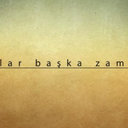The "pseudo-cholangiocarcinoma sign" in patients with cavernous transformation of the portal vein and its effect on the serum alkaline phosphatase and bilirubin levels.
Paraules clau
Resum
OBJECTIVE
The goal of this study was to identify the underlying disorder responsible for portal venous thrombosis and cavernous transformation of the portal vein (CTPV). All patients with this finding underwent a thorough medical examination with intent to determine the cause and biochemical consequences of CTPV.
METHODS
During an 8-yr period, a total of 1247 patients with clinical evidence of portal hypertension were examined using ultrasonography. Forty four of these 1247 patients were found to have CTPV. In each case, the finding of CTPV was confirmed by portography using either splenoportography or arterial portography, with digital subtraction angiography. These 44 patients were studied in an effort to determine the etiology of the cavernous transformation. In addition, the specific reason for the increased serum bilirubin and alkaline phosphatase levels in 35 of the 44 cases was evaluated by endoscopic retrograde cholangiopancreatography (ERCP) (34 patients), percutaneous transhepatic cholangiography (one patient), and by CT in 19. The surgical findings in 10 of these 44 patients, who ultimately underwent splenectomy and portal venous decompression for bleeding, were reviewed in light of the ultrasonographic, portographic, and ERCP findings in the same 10 patients.
RESULTS
The underlying disorder responsible for cavernous transformation was found to be Behcet's disease in seven patients, chronic liver disease in four, congenital hepatic fibrosis in five, congenital protein C deficiency in one, and a prior abdominal operation for cholelithiasis in one patient. Despite a full clinical, radiological, hematological, and chemical evaluation, no etiology for CTPV was found in the remaining 26 patients. All of these later cases had no indication for liver biopsy or evidence for parenchymal liver disease. In these 26 patients, the serum levels of bilirubin and alkaline phosphatase ranged from mild to moderately increased compared with the moderately to markedly increased levels present in the 18 patients having an identifiable underlying liver disease. Irregular, undulating narrowing and nodular extrinsic defects, the so-called "pseudo-cholangiocarcinoma sign" was present in 33 of the 35 patients who underwent either ERCP or percutaneous transhepatic cholangiography. No such findings were observed in 10 control cirrhotic patients with portal hypertension but without CTPV, who also underwent ERCP.
CONCLUSIONS
The results of this study indicate that mildly increased serum alkaline phosphatase and direct reacting bilirubin levels occur in cases with CTPV associated with a pseudo-cholangiocarcinoma sign. Presumably, these enzyme elevations are a result of compression of the biliary tree by the venous collaterals that run along the extrahepatic biliary tree. None of the 33 cases with this sign had cholangiolar carcinoma. Thus, when a patient with splenomegaly but without documentable parenchymal liver disease demonstrates an increase in the serum direct reacting bilirubin and alkaline phosphatase levels, CTPV and the presence of large extrahepatic venous collaterals partially obstructing the biliary tree should be suspected.



